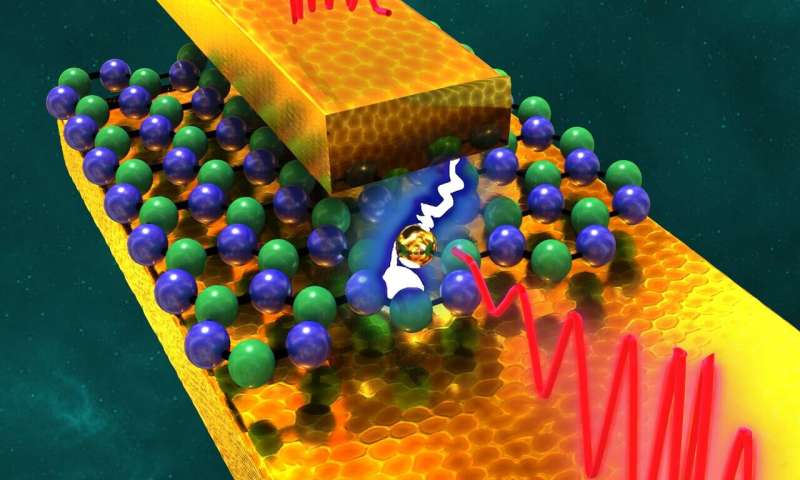New 5G switches mean battery life improvements, higher bandwidth and speeds

The 5G revolution has begun, and the first lines of phones that can access the next generation of wireless speeds have already hit the shelves. Researchers at The University of Texas at Austin and the University of Lille in France have built a new component that will more efficiently allow access to the highest 5G frequencies in a way that increases devices' battery life and speeds up how quickly we can do things like stream high-definition media.
Smartphones are loaded with switches that perform a number of duties. One major task is jumping between networks and spectrum frequencies: 4G, Wi-Fi, LTE, Bluetooth, etc. The current radio-frequency (RF) switches that perform this task are always running, consuming precious processing power and battery life.
"The switch we have developed is more than 50 times more energy efficient compared to what is used today," said Deji Akinwande, a professor in the Cockrell School of Engineering's Department of Electrical and Computer Engineering who led the research. "It can transmit an HDTV stream at a 100 gigahertz frequency, and that is unheard of in broadband switch technology."
Akinwande and his research team published their findings today in the journal Nature Electronics.
"It has become clear that the existing switches consume significant amounts of power," Akinwande said. "And that power consumed is useless power."
The new switches stay off, saving battery life for other processes, unless they are actively helping a device jump between networks. They have also shown the ability to transmit data well above the baseline for 5G-level speeds.
The U.S. Defense Advanced Research Projects Agency (DARPA) has for years pushed for the development of "near-zero-power" RF switches. Prior researchers have found success on the low end of the 5G spectrum—where speeds are slower but data can travel longer distances. But, this is the first switch that can function across the spectrum from the low-end gigahertz (GHz) frequencies to high-end terahertz (THz) frequencies that could someday be key to the development of 6G.
The UT team's switches use the nanomaterial hexagonal boron nitrite (hBN). It is an emerging nanomaterial from the same family as graphene, the so-called wonder material. The structure of the switch involves a single layer of boron and nitrogen atoms in a honeycomb pattern, which Akinwande said is almost 1 million times thinner than human hair, sandwiched between a pair of gold electrodes.
The impact of these switches extends beyond smartphones. Satellite systems, smart radios, reconfigurable communications, the "internet of things" and defense technology are all examples of other potential uses for the switches.
"Radio-frequency switches are pervasive in military communication, connectivity and radar systems," said Dr. Pani Varanasi, division chief of the materials science program at the Army Research Office, an element of the U.S. Army Combat Capabilities Development Command's Army Research Laboratory that helped fund the project. "These new switches could provide large performance advantage compared to existing components and can enable longer battery life for mobile communication, and advanced reconfigurable systems."
This research spun out of a previous project that created the thinnest memory device ever producedalso using hBN. Akinwande said sponsors encouraged the researchers to find other uses for the material, and that led them to pivot to RF switches.
The UT team includes electrical and computer engineering professor Jack Lee and graduate students Myungsoo Kim, Ruijing Ge and Xiaohan Wu. They worked with researchers at the University of Lille's Institute of Electronics, Microelectronics and Nanotechnology, led by Emiliano Pallecchi and Henri Happy.
More information: Myungsoo Kim et al, Analogue switches made from boron nitride monolayers for application in 5G and terahertz communication systems, Nature Electronics (2020). DOI: 10.1038/s41928-020-0416-x















